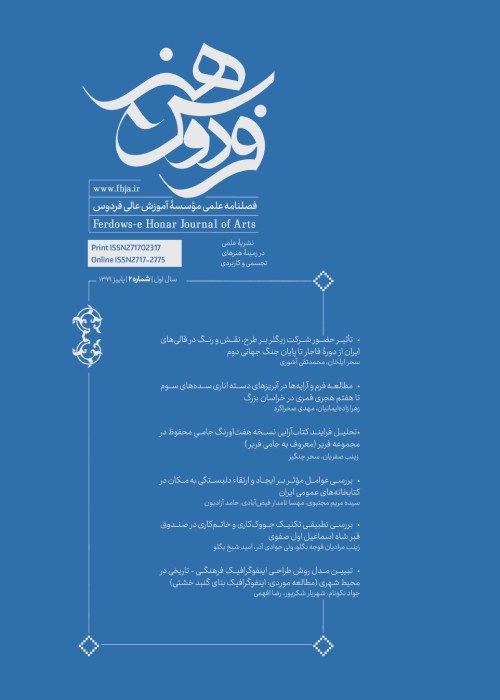Theory of Community Architecture in Contemporary Islamic ArchitectureAssessing different typologies of CA based on “Architect-User”
Terms such as “community Architecture”, “Social Architecture”, “Participatory Architecture” consider to different typologies of participation during design process phases but in these cases, level of participation differs in design process. Much research considers to on theoretical aspects of participation in architectural approaches but more recent examples consider to responsible cases. Many of the ideas of modern community architecture take a glance to the behavioral patterns of the user, wants and needs, he will. So Through proper understanding of needs, wants and will, it is possible to build responsible environment. This is development of Habraken's theory that talks about design with and for people. The main question of this research is what is the difference among participation typologies in contemporary architecture of Islamic countries? As an approach, participatory architecture has not been as a suitable approach for many architects because they believe the user interfere lead the project in wrong way and is a time consuming process. On the other side, some governments make seductive participation for some political aims. When there are issues associated with the use of participatory research methods commonly used categories such as case studies, qualitative, quantitative, content analysis, etc., alone cannot be efficient alone. Among the various theories of participation, less considered to typology of participation in practice and just some of the classical theorists like Arnstein (1969), talked about different levels of participation. In 1986, Wulz in an article, the concept of participation, compared some works of architects with participatory approach. He analyzed works of some postmodern architects such as Michael Graves and Aldo Rossi with some post structuralism architects such as Ralph Erskine, Road Hackney and Christopher Alexander. Wulz in his article refers to some typologies of participation such as interpretative participation, regional, self-decision , etc. but he doesn’t propose clear categories about these. Another group of theorists never classified community architecture approaches so implementations did not provide a group of architectural ideas based on a typology that can be achieved. Hence almost all theories completely theoretical basis and practical examples of the architecture has been less, even some theorist such as Hatch and Sanoff that have a practical view, don’t determine typologies. Thus, despite the participatory architecture, community architecture, and collective architecture theories and variety of sources in these field, there is very little source about typologies of participation in practice. Participatory research method is a new and effective paradigm to use knowledge generated by community behavior. Generally, action research (AR) is used in this research also qualitative research methods. Many of recourses in this field talk about direct participation of user in design process and also many of cases are not outstanding in contemporary architecture literature and so just a seduce participation occurs during design. Some methods used in this kind is questioners, workshops, interview, etc. some cases consider to participation during construction phases of project (especially in developing countries). Assessing different theories and responsible cases of community architecture shows there are seven typologies of participation: 1-social mobilization, 2-questioners participation, 3-consulting design, 4-functional participation, 5-interactive participation, 6-regional participation, 7-interpretive participation. Base on previous , about characteristic of different participatory approaches, community architecture, participatory architecture and social architecture, the relation between approaches and typologies is: In community architectures, the use of beliefs and rituals Symbols is considered effective and engaging people through them is understandable, interactive, interpreting and regional participation are concerned. In participatory architecture because of systematic relationship between user and expert, reviews of the samples show the existence of such information, consultation, functional and interactive participation. Among all the types, functional participation is used more. In social participation, involvement in the process by using social mobilization, information and consulting are done. Different typologies of participation in architectural cases are a wide range of successful methods of participation that if far from previous consideration of typical participation in social mobilization and questioner’s methods. Seven typologies of participation in design process shows different level and condition of participation for user and architect. Some of typologies such as interpretive participation and regional participation consider more to values and costumes and user behaviors and are more indirect. Functional and consulting participation have rational view to participation and let the user take part as it is necessary. Questioner participation and social mobilization, today are named seduce participation (also in some cases may be useful). Today the usage of community architecture theory in contemporary Islamic architecture is more successful than social architecture or participatory design. In case of typology, interpretative and regional participation lead to responsible built environment.
- حق عضویت دریافتی صرف حمایت از نشریات عضو و نگهداری، تکمیل و توسعه مگیران میشود.
- پرداخت حق اشتراک و دانلود مقالات اجازه بازنشر آن در سایر رسانههای چاپی و دیجیتال را به کاربر نمیدهد.


